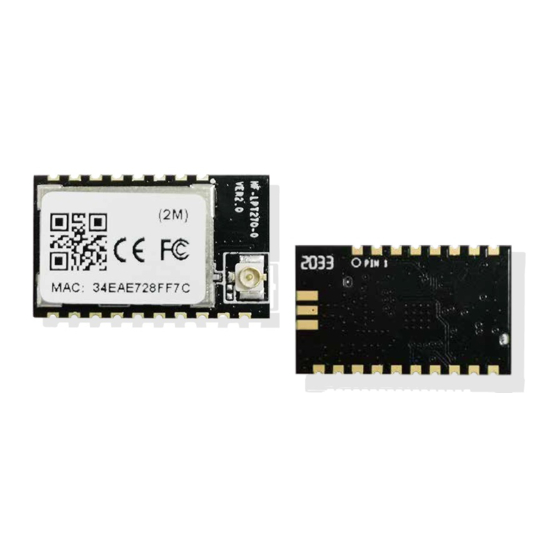High-Flying HF-LPT270-0 Manual del usuario - Página 19
Navegue en línea o descargue pdf Manual del usuario para Unidad de control High-Flying HF-LPT270-0. High-Flying HF-LPT270-0 19 páginas. Wi-fi+ble module

9. Additional testing, Part 15 Subpart B disclaimer
The final host / module combination need to be evaluated against the FCC Part 15B criteria for
unintentional radiators in order to be properly authorized for operation as a Part 15 digital device.
The host integrator installing this module into their product must ensure that the final composite product
complies with the FCC requirements by a technical assessment or evaluation to the FCC rules, including the
transmitter operation and should refer to guidance in KDB 996369.
For host products with certified modular transmitter, the frequency range of investigation of the composite system
is specified by rule in Sections 15.33(a)(1) through (a)(3), or the range applicable to the digital device, as shown
in Section 15.33(b)(1), whichever is the higher frequency range of investigation
When testing the host product, all the transmitters must be operating.The transmitters can be enabled by
using publicly-available drivers and turned on, so the transmitters are active. In certain conditions it might be
appropriate to use a technology-specific call box (test set) where accessory devices or drivers are not available.
When testing for emissions from the unintentional radiator, the transmitter shall be placed in the receive mode or
idle mode, if possible. If receive mode only is not possible then, the radio shall be passive (preferred) and/or active
scanning. In these cases, this would need to enable activity on the communication BUS (i.e., PCIe, SDIO, USB) to
ensure the unintentional radiator circuitry is enabled. Testing laboratories may need to add attenuation or filters
depending on the signal strength of any active beacons (if applicable) from the enabled radio(s). See ANSI C63.4,
ANSI C63.10 and ANSI C63.26 for further general testing details.
The product under test is set into a link/association with a partnering WLAN device, as per the normal intended use
of the product. To ease testing, the product under test is set to transmit at a high duty cycle, such as by sending a
file or streaming some media content.
FCC Statement:
Any Changes or modifications not expressly approved by the party responsible for compliance could void the user's
authority to operate the equipment.
This device complies with part 15 of the FCC Rules. Operation is subject to the following two conditions:
(1) This device may not cause harmful interference, and
(2) This device must accept any interference received, including interference that may cause undesired operation.
<END OF DOCUMENT>
